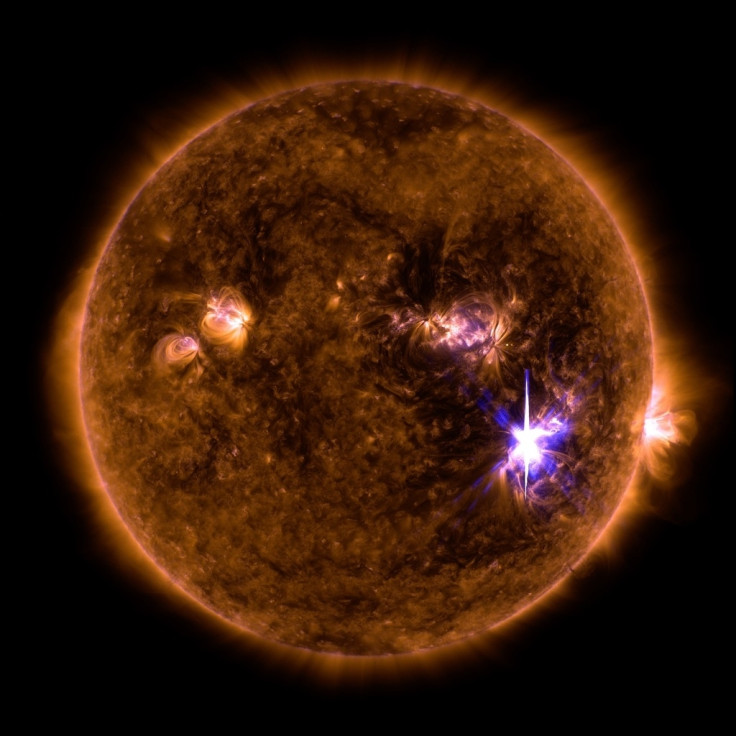As Hurricane Irma rages, the Sun's monster solar flares may add risk of communications blackout
The massive solar flares have already affected the Earth, causing an hour-long radio blackout.
The Sun just unleashed two massive solar flares, one of which was the most powerful one recorded in over a decade. Nasa said that both of the solar flares have been deemed X-class, which "denotes the most intense flares".
The solar flares were so powerful that they already caused high-frequency radio blackouts on Earth, which lasted for around an hour. The first solar flare, X2 class came in at 5.10am EDT but was outclassed merely three hours later by the second one, which was a monster X9 class, the biggest one recorded since 2005.
What are solar flares?
Solar flares are essentially huge explosions on the Sun's surface that occur when the Sun's magnetic field, which causes sunspots on the solar surface, twist up and eject massive amounts of energy. Large solar flares are sometimes accompanied with CMEs (coronal mass ejections). Scientists are still watching to see if a CME is making its way toward the Earth.
"We don't know what's coming our way just at the moment," Theo Stein, public affairs officer at NOAA told The Register. "We have picked up some X-rays from the event, but we're unsure of its precise direction. We should have an answer later today."
Solar flares and Hurricane Irma
A CME approaching Earth could potentially cause a geomagnetic storm around our planet, potentially damaging satellites, communications and power systems, Space.com reported. With Hurricane Irma raging on, the possibility of a CME headed our way may raise concerns about potential communications chaos.
However, weather satellites tracking Irma's path through the Caribbean have been design to handle such events. While some older satellites may struggle with the effects of being hit with charged solar particles, the satellite tracking Irma, the GOES-16, which was launched in November last year, has been designed to handle such events.
"The satellites are designed very specifically to take into account these kinds of events," Terry Onsager, a physicist at the NOAA Space Weather Prediction Center, told Live Science.
Interestingly, the solar flares come at a surprising period, as the Sun approaches its solar minimum period in its cycle. The solar cycle – a 11 year periodic activity cycle – began in 2008 and is now moving to the lowest level of activity.
"We are heading toward solar minimum, but the interesting thing about that is you can still have events, they're just not as frequent," SWPC space scientist Rob Steenburgh told Space.com. "We're not having X-flares every day for a week, for instance — the activity is less frequent, but no less potentially strong. These kind of events are just part of living with a star."

© Copyright IBTimes 2025. All rights reserved.






















